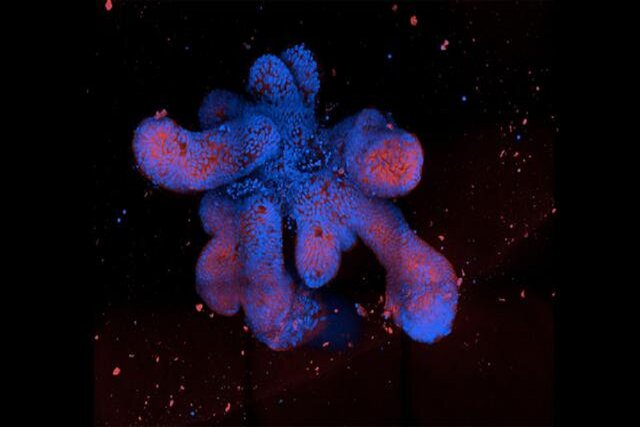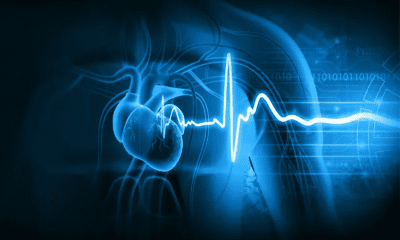Making a small version of the intestine in the laboratory. A lab-grown small intestine could help provide personalized treatment for Crohn’s disease.
Making a small version of the intestine in the laboratory
Scientists have found a way to reveal the severity of intestinal diseases through epigenetic changes, which could help develop a new treatment plan for patients.
For decades, biomedical researchers have been looking for ways to develop a standard treatment for patients with Crohn’s disease and irritable bowel disease (IBD).
Now, scientists at the University of Cambridge have discovered a way to grow a small intestine in the lab from cells taken from a patient for more precise and personalized treatments.
Professor Matthias Zilbauer, professor of pediatric gastroenterology at the University of Cambridge and Cambridge University Hospitals, explained: “The actual model of this small intestine was made more than a decade ago by a scientist named Hans Clovers. Together with a group of scientists, he discovered structural units called intestinal epithelial stem cells.
He added that the scientists combined this with what is needed for cells to continue growing and dividing after they leave the gut.
Focusing on children with Crohn’s disease
Inspired by this model that grows organoids from humans, researchers in this new study found specific epigenetic findings in patients, especially children and adolescents, with Crohn’s disease.
Crohn’s disease is a chronic inflammatory bowel disease whose cases are increasing worldwide, especially among children. This disease significantly affects the quality of life of patients and can lead to severe complications.
A new pathway called major histocompatibility complex class I (MHC class I) was observed, which appears to be regulated by changes in epigenetic programming.
Scientists have discovered a way to reveal the severity of diseases through epigenetic changes, which could help develop a new treatment plan for patients.
“What we found was that patients with significant epigenetic changes had a more severe disease course,” says Seelbauer.
Drug treatment for the small intestine in vitro before administration to the patient
Scientists hope to develop new drugs that can be tested on this small lab intestine before being given to a patient.
Conventional treatments are only effective 60% of the time, so the vast majority of patients may not respond to them and may even be exposed to severe side effects.
In the future, scientists hope to grow these organoids from patients for drug testing and, if a drug works on the small intestine, administer it to the patient.
The study found that the cells that make up the inner lining of the intestine in patients with Crohn’s disease show increased activity of major histocompatibility complex class I, which are proteins found on the surface of nearly all nucleated cells in the body and are critical for the immune response.
Read more: Artificial intelligence identifies cancer killer cells
This high activity can lead to inflammation by activating immune cells to more easily recognize antigens such as toxins or other foreign substances. Antigens may include molecules from food or gut microbiota that trigger an immune response and contribute to the inflammation characteristic of Crohn’s disease. This is the first time that stable epigenetic changes have been shown to explain intestinal epithelial abnormalities in Crohn’s patients.
The team of researchers is currently working on finding drugs that can modify this pathway.



 Technology1 year ago
Technology1 year ago


 Technology1 year ago
Technology1 year ago


 Technology1 year ago
Technology1 year ago


 AI2 years ago
AI2 years ago


 Technology1 year ago
Technology1 year ago


 Technology1 year ago
Technology1 year ago


 Humans2 years ago
Humans2 years ago


 Technology1 year ago
Technology1 year ago















 Comparison of left ventricular tortification in great apes.
Comparison of left ventricular tortification in great apes.
 Long-term coffee consumption will not have significant effects on weight loss.
Long-term coffee consumption will not have significant effects on weight loss. Coffee consumption can increase the body’s metabolic rate at rest.
Coffee consumption can increase the body’s metabolic rate at rest.



 Gymnasts like Simone Biles usually have an enhanced sense of space, called proprioception.
Gymnasts like Simone Biles usually have an enhanced sense of space, called proprioception. Football players must constantly think about their feet during the match
Football players must constantly think about their feet during the match Olga Kotelko was one of the greatest-known athletes in her field
Olga Kotelko was one of the greatest-known athletes in her field Starting sports from a young age helps to improve sports performance at an older age.
Starting sports from a young age helps to improve sports performance at an older age.






